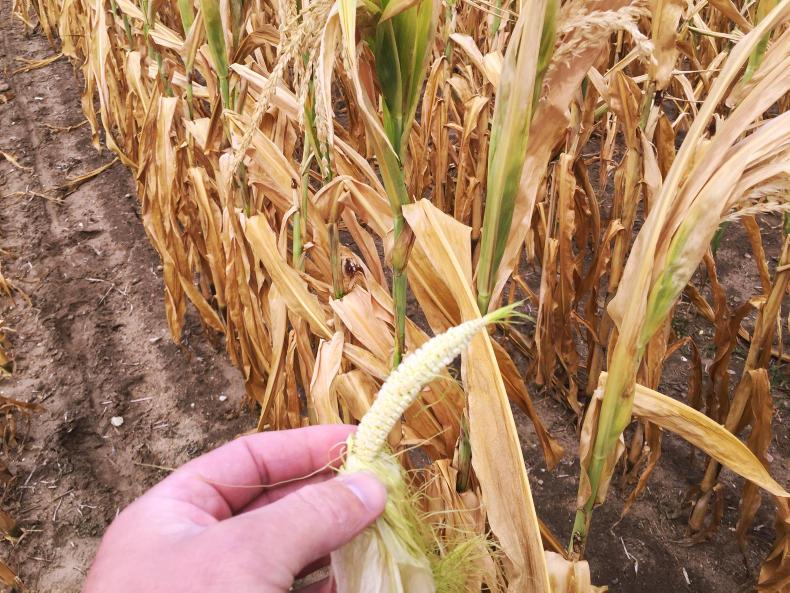Farmers in northern Germany are reeling from the worst drought in living memory. The Irish Farmers Journal travelled to Brendenburg, near Berlin in northeast Germany, on Friday to see the damage to crops and the impact on farmers.In 2017, there was 620mm of rain in Brandenburg. This year to date, almost nine months into the year, there has only been 192mm.
Farmers in northern Germany are reeling from the worst drought in living memory. The Irish Farmers Journal travelled to Brendenburg, near Berlin in northeast Germany, on Friday to see the damage to crops and the impact on farmers.
In 2017, there was 620mm of rain in Brandenburg. This year to date, almost nine months into the year, there has only been 192mm.
Three seasons have been affected. The spring was cold – much colder than normal, with frosts of -6°C in early April. This delayed sowing and germination of crops.
May came dry and warm and the summer has been hot and dry ever since, so late-sown crops never got a chance to grow well.
Now, farmers are worried about next year’s crop as the land is too dry to sow winter crops. Normally, most farmers in the area would have sown winter oilseed rape but very little has been sown to date because land is too dry.
Soil type in this region is predominately free-draining and sandy, although there are some peaty soils and crops here have done a lot better, but these fields are normally used for grass.

Yields
The cereal harvest is complete and yields are way back. In a normal year farmers would expect to get 5 to 6t/ha of grain from their barley and wheat, but average yields this year are a meagre 2 to 3t/ha (0.8 to 1.2t/acre).
The maize harvest has commenced much earlier than normal. It is usually not until September that maize is harvested but farmers are trying to salvage crops this year.
Normally, farmers would expect maize to yield 35t/ha but crops this year are coming in at around 20t/ha.

But the quality is worse than the yield. The energy in maize comes from the cob, but in the maize fields I visited the cobs are barely visible and the stalks are on average about 5ft high, when they would normally be 8 or 10ft high.

The feeding value of this maize will be very poor and disastrous for dairy and livestock farmers relying on the crop to feed their herds that are housed all year round.
Some farmers are fortunate to have reserves left over from a bumper year last year, but in most cases cows will have to be culled and extra grain fed. Maize without the cob is just a high-fibre feed with no energy.
Support
Galway native Paul Costello has been farming in Brandenburg for years and says he has never seen it as bad.
“Usually, if there’s a bad cereal crop the maize is good and vice versa. But this year both crops are terrible and farmers in this area are really depressed,” Paul said.
The German government announced a €340m support scheme last week but farmers I spoke to are reserved about how effective it will be.
To claim the fund, they must demonstrate that they suffered crop losses in excess of 30% of normal. But this means their fertiliser allowance will be less in 2019 as farmers are only allowed to spread fertiliser based on yield. Some farmers will rather forego support now, in order to ensure they can spread fertiliser crop requirements next year.

Contractor
Speaking to a contractor who has six maize harvesting outfits, he says that maize is a disaster right across the region with some crops barely 2ft high.
He operates out of the Magdeborg region which is about 50 miles from Brandenburg and renowned as some of the best farmland in Germany, but he says crops there are very badly affected.
As you travel south towards central and southern Germany the impact of the drought seems to be less and maize crops are looking good.
Read more
Germany unveils €340m drought support package
Dairy markets: German milk production continues to expand





SHARING OPTIONS: